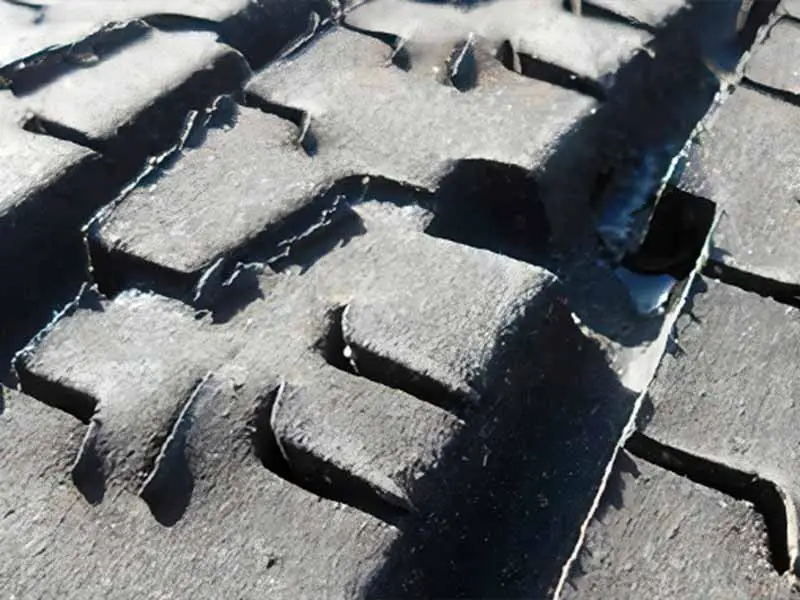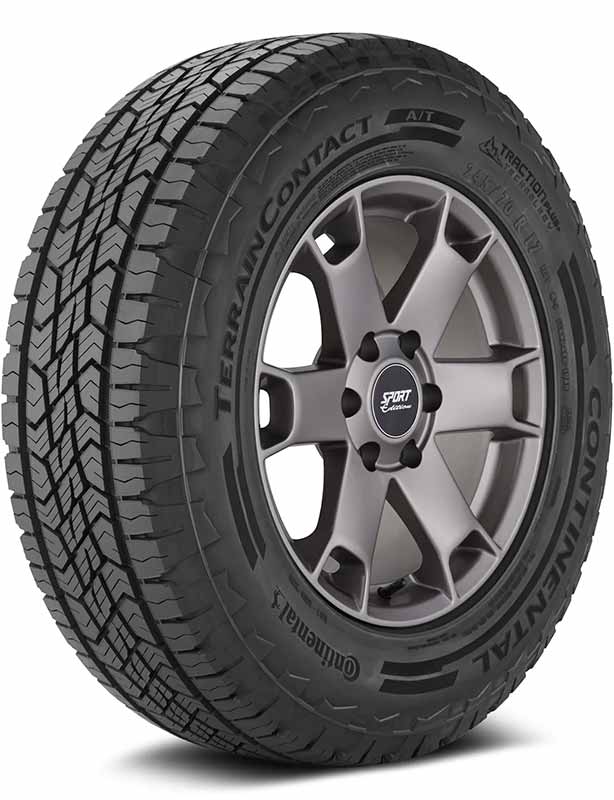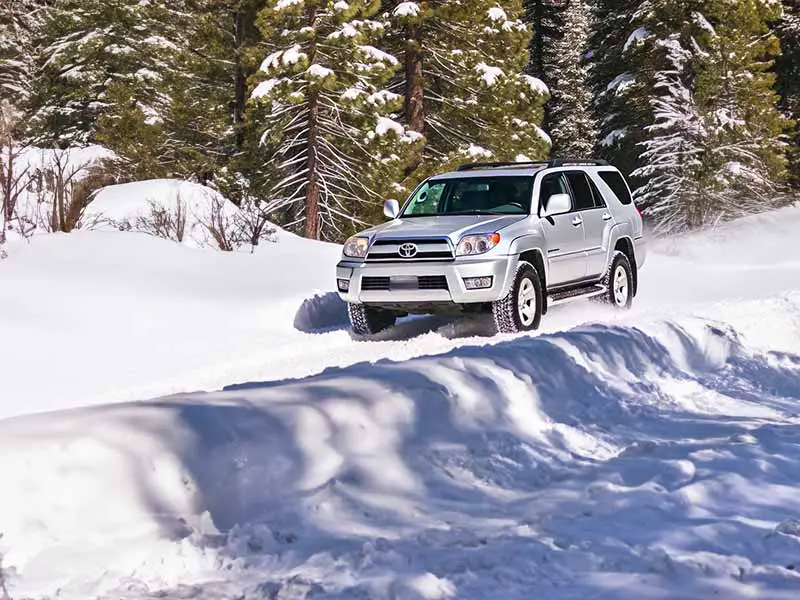Irregular tire wear can be difficult to troubleshoot, but feathering is usually easy to identify. The feathery bits of rubber hanging off of the left or right side of your tread blocks is a telltale sign.
Often a bad wheel alignment is the problem, but suspension system problems are also sometimes to blame.
What Does Tire Feathering Mean?
Tire feathering is when the tread blocks and ribs of a tire wear more on one side than the other across the width of the tire. The result is easily identified by one side of the tread block having rounded edges and the other side having a bit of thin feather-like rubber hanging off the edge.
Feathering is usually the result of misalignment, especially excessive toe in or out. Worn suspension components can cause alignment issues and need replacing to restore proper alignment.
An experienced mechanic should be able to sort out whether the underlying issue is only an alignment problem or suspension component failure such as ball joints.
Let’s take a closer look.
Tire Feathering Symptoms
The unique symptoms that help you identify feathered tires are a loud roar at speed and the bits of feathered rubber hanging from one side of your tread blocks.
As with uneven tire wear problems, the tire wears down more quickly than normal and can drastically reduce the lifespan of your tires.
Reduced handling performance is another major negative side effect of any uneven wear. It prevents the tires from coming into contact with the road surface at the most ideal angle to maximize traction and stability.
Since feathered tires are essentially being dragged down the road fuel economy will also be reduced.
Tire Feathering Noise
The noise caused by feathered tires is commonly described as a roar or a bit like the knobby tires of a 4×4. Some have also confused the noise with a bad wheel bearing.
Most people don’t realize how loud their tires have gotten as it has gradually increased over time. A tire professional will be much more easily able to hear the noise since they haven’t been in the car or truck every day and know what to listen for.
Tire Feathering Example

Tire Feathering Causes
Tire feathering is often caused by poor alignment. Too much toe in or toe out can cause feathering by basically dragging the tire at a slight angle which creates the angled wear seen in feathered tires.
Toe-In Feathered Tires
Toe-Out Feathered Tires
Overall axle alignment can also be a problem that can cause feathered tires. This can be the result of misalignment during production or suspension components that have worn or damaged over time.
Tire Feathering Fix
Wheel alignment is the usual fix for uneven tire wear like feathered tires. Often, there is also a need to address problems with the suspension system as well.
On older vehicles, a proper alignment is often not enough to solve the problem. The uneven wear will continue due to worn bushings in control arms or other failing suspension components.
While you may be able to get the alignment of your car or truck to within spec, once it is back on the road surface, the rolling resistance force can push it slightly back out of alignment if bushings and other parts of your suspension system have too much play.
Rear Tire Feathering
Worn suspension components are usually the cause of feathered tires on the rear. Lower control arm bushings are a common culprit on older vehicles.
Ball joints allow for movement in the suspension system and will eventually wear out over a long enough period of time. Sometimes the bushing can simply be replaced. Other times the entire control arm will need replacing. It depends on the design of your control arm as to whether or not the bushing is serviceable.
Tire Feathering On Inside Or Outside Edge
If feathering only seems to be occurring on the inside or outside edge of your tire tread you likely have incorrect toe alignment as well as out of spec camber.
Negative camber will cause uneven wear to occur on the inner shoulder of your tires while positive camber will cause wear on the outer shoulders. Most vehicles will have a bit of negative camber to improve handling performance and traction.
Worn suspension components can also cause alignment settings to fall out of spec as well.
Will Feathered Tires Smooth Out?
Minor feathering, if caught early, may resolve itself if the underlying issue is properly corrected. You also want to ensure that the minimum tire tread depth has not been reached at any point across the contact patch.
The legal minimum tread depth is 2/32″. It’s often recommended that your tires be replaced once you reach 4/32″ of tread depth, although some will push things a bit to squeeze a little more life out of their tires.
It’s important to understand that as a tire wears down it gradually loses its ability to grip the road surface in adverse weather conditions. New tires perform very differently to those with 4/32″ of tread depth left.
More excessive wear may require replacement, but it’s possible not all tires will be in poor condition and need replacement.
Tire Feathering Vs Tire Cupping
Cupping is quite a bit different than feathered tires. Cupped tires will usually have diagonal grooves, sometimes called scallops, across the width of the tire tread.
Unlike many uneven tire wear patterns, like feathering, a cupping wear pattern is usually caused by a balance problem. Often it is simply the result of a wheel weight being knocked or having fallen off. It can also be the result of a bent rim or even a tire manufacturing defect.
Be sure to read our article on tire cupping for a more in-depth explanation.
Resources
Below are some links you may find helpful when learning about tires
Final Thoughts
Regular tire maintenance is necessary to keep your tires in good condition, but it also helps catch problems like feathering early, before you need to purchase new tires.
A visual inspection of your tires and wheels regularly will help you stay on top of your tread depths and identify easy to spot irregular wear like feathering.
Good luck and happy motoring.



